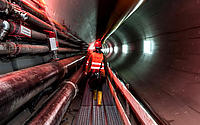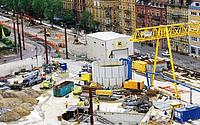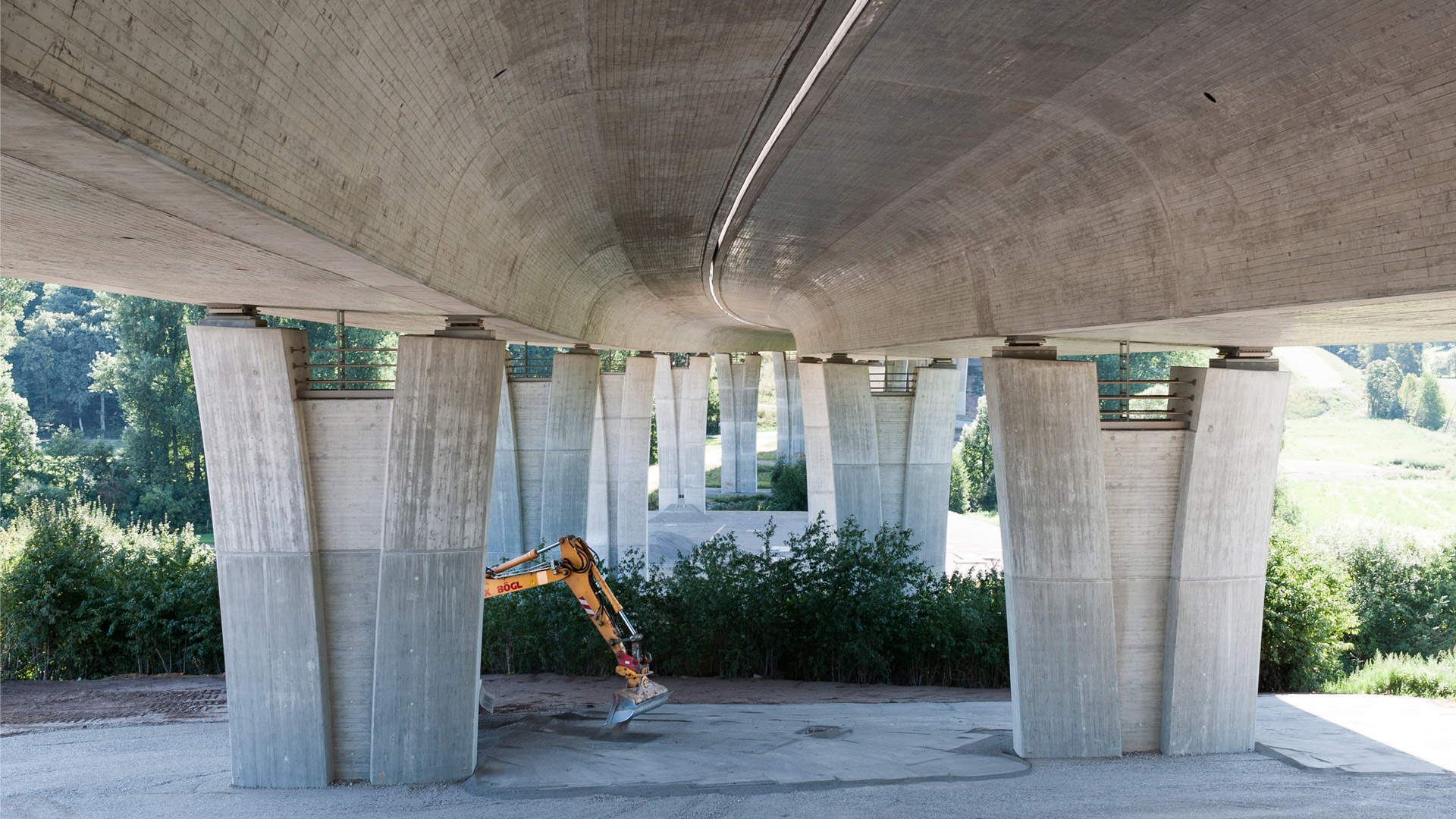Scientists around Professor Dr. Andreas Gerdes are working with industry partners to decelerate the aging process of technical infrastructure and extend the life of new construction projects.
Pothole-ridden roads, dilapidated buildings, bridges in danger of collapsing, outdated rails or leaking supply lines - all these examples are obvious signs that constructed infrastructure only has a limited lifespan. In the construction industry, we speak of the lack of serviceability with regard to the originally intended use. This means that the vast network of infrastructure cannot be used endlessly, safely and without restrictions. Often, the projected lifespan is not even achieved in reality: bridges that are supposed to last 100 years according to the planning, for example, only have a practical lifespan of 20 to 30 years. If you walk through the streets with a conscious eye, you can see the creeping decay or, better, the maintance need in many places.
Prof. Gerdes, head of the Mineral Interfaces Research Group at the KIT Institute for Functional Interfaces, explains: "It is quite natural that materials fatigue over time. After all, the structural substance suffers not only from natural weathering, but also from the continuous stress of daily use and additional impacts, such as from de-icing salt in winter." In Germany alone, the federal government will invest around 260 billion euros in maintaining and building new infrastructure over the next 15 years. This was approved by the federal government in the so-called Federal Transport Infrastructure Plan. Around half of this money will be spent on keeping roads, bridges, supply lines and buildings in good condition. his clearly shows how investment-intensive maintenance alone is.
Through targeted preventive measures for existing buildings on the one hand and new construction with the latest materials and technologies on the other, the life cycles of building objects could be significantly extended and the necessary investments better amortized. "In the Innovation Hub 'Prevention in Construction' at KIT, we bring science to the construction site. In the project, all stakeholders - building owners, raw material producers, planners, and contractors - work together on a structured innovation process," says project coordinator Prof. Gerdes. The overriding premise is a product-oriented approach: future needs of the construction industry are discussed and identified in large working groups, for which concrete solutions are then jointly developed within the framework of individual research projects. For example, technologies and services are developed to protect structures from corrosion and other damaging processes in order to minimize failure. The technical solutions will then be transferred to the market in a targeted and timely manner.
In addition to rejuvenating the structural fabric, such innovations also give contractors a clear competitive edge in the highly competitive market. They can score points with potential clients with new solutions and longer serviceability. "It's time to shake up the construction industry," Prof. Gerdes makes clear: "Because it's not just construction companies that need to rethink, but also the mostly public-sector clients." As a rule, construction costs are the decisive factor in awarding contracts: those who meet the tender requirements and submit the lowest-priced bid usually win the contract. However, initial construction costs are far from indicative of the costs for the entire life cycle of the structure. Under poor conditions, the owner faces incalculable maintenance costs in terms of time and money. "Prevention at the start of construction adds only 2 to 5 percent to the construction price. However, with this comparatively small share, the planned lifespan can be achieved without maintenance, whether for new construction or renovation," affirms Prof. Gerdes, a construction chemist. "To achieve this, we will work with all players along the value chain in the hub to develop real innovations for the infrastructure sectors of energy, water, transport and municipal infrastructure in the coming years."
"There needs to be a shift in thinking in the construction industry. Instead of focusing on keeping the initial construction costs as low as possible, we should look at the costs for the entire life cycle. This is where targeted preventive measures in new construction and repair can have a positive effect in the long term."
Model Community Malsch
Following the launch of the "Prevention in Construction" project in 2016, it caught the attention of Malsch Mayor Elmar Himmel. He recognized the potential that, with the help of KIT researchers, the rehabilitation of the local Hans Thomas Community School could be particularly sustainable. Since then, KIT and the municipality of Malsch have been working together on this and other projects. The cooperation is also a stroke of luck for the researchers: The resulting ideas and developments can be tested directly on the living object. In addition to the school renovation, other projects with targeted prevention measures are planned in the Malsch community, such as flood protection.
Further Links
Images: KIT




